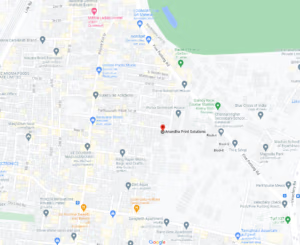High Performance Asset Tags
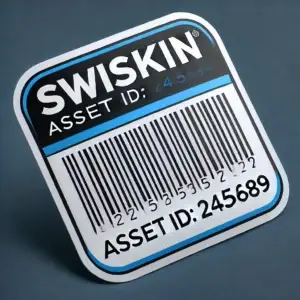
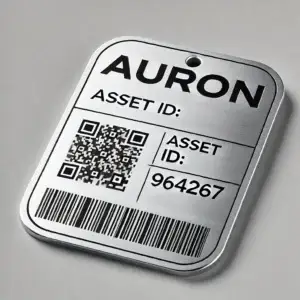
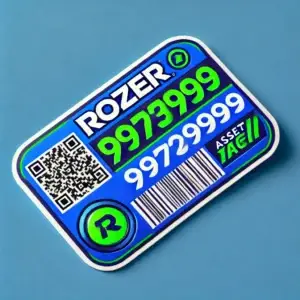
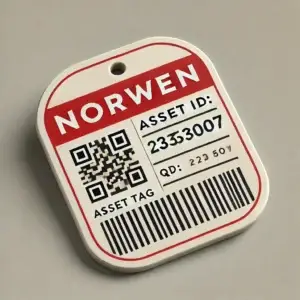
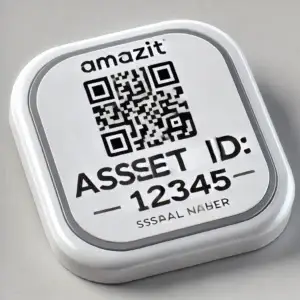
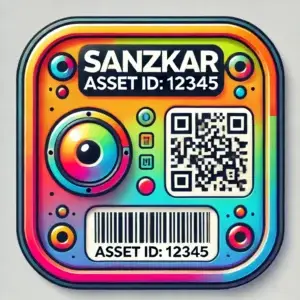
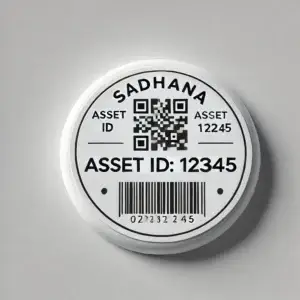
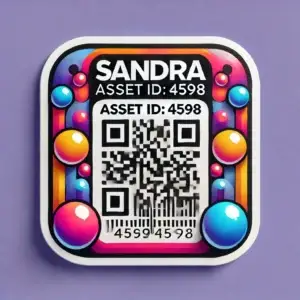
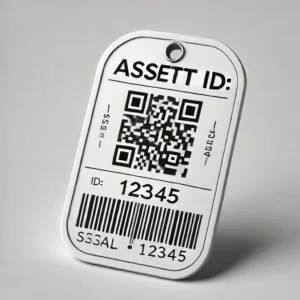
High Performance Asset Tags Manufacturer
In business, the difference between order and chaos often comes down to how well you track your assets. From the smallest USB stick to massive factory machinery, every item has value. Losing track of these items isn’t just frustrating—it’s expensive.
This is where asset tags step in. These tiny yet powerful labels, also known as fixed asset tags, fixed asset labels, fixed asset stickers, asset stickers, and asset labels, act like the digital fingerprints of your equipment. They make it possible to track, manage, and protect your assets with speed and precision.
In this guide, we’ll explore everything from features and benefits to industry-specific applications, customization options, and real-world success stories. By the end, you’ll see why investing in tags isn’t just smart—it’s essential.
Key Features of Asset Tags
A great asset tag is designed to survive years of wear and tear while still being readable and scannable. Here’s what makes them effective:
1. Tough and Durable Materials
Your asset stickers can be made from polyester, polycarbonate, anodized aluminum, or vinyl. These materials can handle moisture, scratches, chemicals, and extreme weather.
Example: A construction company uses polycarbonate fixed asset stickers that survive dust storms and heavy rains without fading.
2. Unique Identification
Each fixed asset label carries a one-of-a-kind code, barcode, QR code, or RFID chip. This code links directly to your database, ensuring no two assets are confused.
Example: A school with 500 identical chairs can still track each one separately using unique tag IDs.
3. Custom Branding
Add your logo, brand colors, and security warnings to make your tags professional and hard to counterfeit.
4. Strong Adhesion
Industrial-strength adhesives keep tags in place for years, even on rough surfaces.
Example: Heavy machinery in a factory with constant vibration still retains its asset tags thanks to strong bonding adhesives.
5. Weather and Chemical Resistance
Perfect for industries that operate outdoors, in marine environments, or in chemical-heavy production areas.
Advantages of Using Fixed Asset Tags
If you’ve been tracking assets with spreadsheets or paper logs, you know how messy and error-prone it can be. Fixed asset stickers simplify the process and bring these advantages:
1. Instant Tracking
Scan the tag, and you’ll know exactly where the asset is, who has it, and when it was last checked.
Example: In a busy hospital, finding the nearest ECG machine takes seconds thanks to asset tag tracking.
2. Theft Prevention
Tamper-proof asset labels make theft harder. If someone tries to remove the tag, it leaves visible damage, discouraging misuse.
Example: A college reduced projector theft by 40% after switching to tamper-proof fixed asset stickers.
3. Faster Audits and Compliance
Regulated industries need accurate asset records. Tags make it quick to prove ownership and verify inventory.
4. Maintenance Made Easy
Link maintenance logs to the asset ID so you never miss a service date. This avoids breakdowns and expensive repairs.
5. Significant Cost Savings
Losing even a few high-value items can cost more than an entire tagging system.
Common Uses of Asset Stickers
Asset stickers work in every type of industry and environment:
Office Equipment
Laptops, printers, projectors, and chairs stay accounted for at all times.
Example: A marketing agency tracks all its laptops so employees can borrow and return them without confusion.
IT Assets
Servers, routers, switches, and cables are tagged to avoid misplacement.
Example: A data center prevents downtime by keeping precise track of every server blade.
Factory Machinery
Drills, conveyor belts, welding machines, and production robots are tagged for maintenance scheduling.
Outdoor Equipment
Construction tools, site generators, and farm machinery use weatherproof fixed asset stickers.
Vehicles
From company vans to delivery trucks, asset tags make fleet management simpler.
Why Choose an Asset Labels Manufacturer in Chennai?
Working with a local manufacturer for your high performance asset tags has clear benefits:
Faster Delivery – No waiting weeks for overseas shipping.
Better Customization – Easy communication for design changes.
Cost Efficiency – Lower transport costs and better bulk pricing.
Industry Expertise – Chennai manufacturers understand regional industrial needs.
Industries That Benefit from Fixed Asset Stickers
Manufacturing
Tracks tools, heavy machinery, and production equipment across multiple facilities.
Education
Labels lab equipment, library resources, and electronics for student accountability.
Healthcare
Tags hospital beds, wheelchairs, diagnostic machines, and surgical tools for faster access.
Construction
Monitors expensive equipment moving between sites.
IT Services
Manages hundreds of laptops, tablets, and mobile devices given to employees.
Customizing Fixed Asset Labels
Custom asset tags can be designed for your exact needs:
Material – Polyester, polycarbonate, anodized aluminum.
Size – Small for electronics, large for machinery.
Design – Include logo, brand colors, and safety warnings.
Tracking Type – Barcode, QR code, or RFID.
Security – Tamper-evident or destructible tags for high-value assets.
Steps to Order Custom Asset Tags
Define Your Needs – Quantity, size, material, and environment.
Provide Asset Data – Serial numbers, barcodes, or codes to print.
Choose a Trusted Manufacturer – Prefer one with proven industry experience.
Approve the Design Proof – Double-check before mass printing.
Apply Correctly – Clean surfaces to ensure strong adhesion.
Maintenance and Care for Asset Stickers
To maximize tag life:
Prepare Surfaces – Remove dirt, grease, and moisture.
Avoid Harsh Chemicals – Prevents ink or adhesive damage.
Inspect Tags Regularly – Replace any that are damaged.
Match Adhesive to Environment – Use heat, cold, or chemical-resistant glue when needed.
Real-World Success Stories
1. Manufacturing Plant Efficiency Boost
A Chennai-based manufacturer producing industrial pumps struggled with missing tools and machines during shift changes. By introducing fixed asset tags with QR codes linked to a cloud database, they reduced search time by 60% and saved ₹4 lakh annually in replacement costs.
2. Hospital Equipment Tracking
A large hospital applied waterproof asset labels to all portable medical devices. This improved emergency response times by 35% because staff could locate equipment instantly.
3. Construction Company Loss Prevention
A national construction firm tagged all vehicles, cranes, and tools with tamper-evident fixed asset stickers. Equipment theft dropped by 45% in the first year, saving them ₹12 lakh.
4. University Inventory Management
A university tagged over 5,000 items, including lab gear and classroom electronics. End-of-year inventory, which used to take three weeks, now takes only five days.
Frequently Asked Questions about Asset Labels
Q1: How long do these tags last?
3–10 years depending on material and environment.
Q2: Are they waterproof?
Yes, materials like polyester, polycarbonate, and anodized aluminum offer water resistance.
Q3: Can I add my logo?
Yes, many companies brand their labels.
Q4: How much do they cost?
Basic stickers cost ₹5–₹10 each; premium RFID ones cost more.
Q5: Do I need special tools to read them?
Barcodes and QR codes work with smartphones; RFID requires a reader.
Final take on Asset Tags
Asset tags are small investments with massive returns. They protect your property, streamline inventory, prevent theft, and make audits stress-free. From a single office to a nationwide network of factories, these labels give you control, accountability, and peace of mind.
Whether you choose simple barcodes or advanced RFID-enabled stickers, the key is durability, customization, and correct application. The right tagging system will pay for itself many times over—protecting your assets and your bottom line.
Contact Details:
Address:
ANANDHA PRINT SOLUTIONS PVT LTD
32/2, First Floor,
Sathanipet 2nd Street,
Adj. Five Furlong Road,
Maduvinkarai, Guindy,
Chennai, Tamil Nadu,
India- 600 032.
Phone:
+91 98409 64267
Email:
info@aprints.in
sales@aprints.in
admin@aprints.in
accounts@aprints.in
design@aprints.in
Geo – Domestic State Supplies
Andhra Pradesh | Arunachal Pradesh | Assam | Bihar | Chhattisgarh | Goa | Gujarat | Haryana | Himachal Pradesh | Jharkhand | Karnataka | Kerala | Madhya Pradesh | Maharashtra | Manipur | Meghalaya | Mizoram | Nagaland | Odisha | Punjab | Rajasthan | Sikkim | Tamil Nadu | Telangana | Tripura | Uttarakhand | Uttar Pradesh | West Bengal
Geo – Domestic City Supplies
Chennai | Mumbai | Kolkatta | Delhi | Bengaluru | Hyderabad | Coimbatore | Thirchy | Madurai| Salem | Erode | Kanyakumari | Thanjavur | Tirunelveli | Vellore | Tiruppur | Kochi | Thiruvananthapuram | Kozhikode | Thrissur | Kollam | Tumkur | Mangalore | Mysore | Udupi | | Davangere | Dharwad | Hubli | Belgaum | Chitradurga | Karwar | Batkal | Visakhapatnam | Vijayawada | Nellore | Sri City (Tada) | Rajahmundry | Ongole | Tirupathi | Kakinada | Amaravathi | Guntur | Anantapur | Kadappa | Ahmedabad | Surat | Vadodra | Rajkot | Bhavnagar | Jamnagar | Jaipur | Jodhpur | Udaipur | Ajmer
International Supplies
Asia- Malaysia | Singapore | Japan | Korea | Thailand | Myanmar | Indonesia | Vietnam | Cambodia | SAARC- Srilanka | Bangladesh | Nepal | Bhutan | Afghanistan | Africa- Algeria | Ethiopia | Ghana | Nigeria | Uganda | Kenya | Tanzania | Uganda | Zambia | Zimbabwe | Egypt | Middle East- UAE | Kuwait | Qatar | Oman | Kingdom of Saudi Arabia | Bahrain | Jordan | Europe- United Kingdom | Germany | France | Switzerland | Italy | Spain | Portugal | Norway | America– United States Of – America | Canada | Mexico | Brazil | Argentina | Greenland | Other Countries – Russia | Australia



